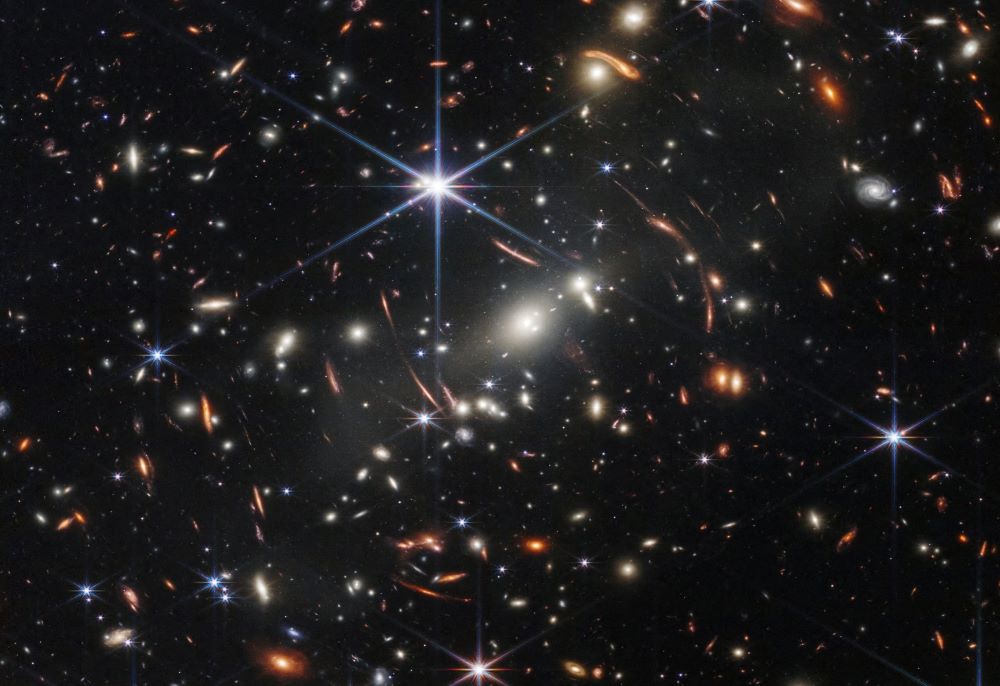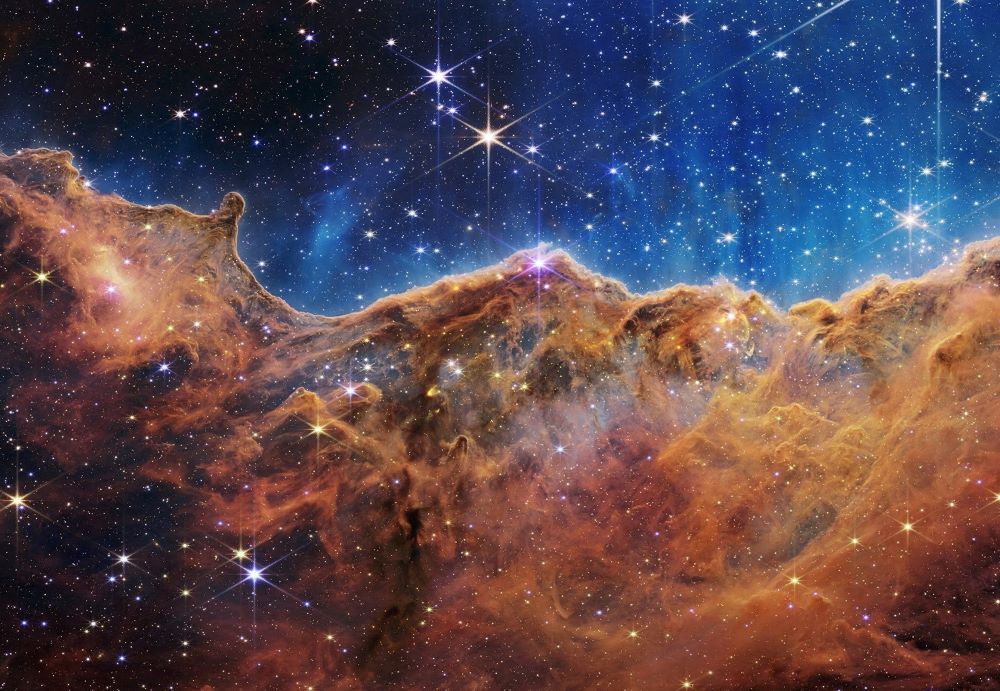
The first full-color image from NASA's James Webb Space Telescope shows the galaxy cluster SMACS 0723. Known as Webb's First Deep Field, the cluster is seen in a composite made from images at different wavelengths taken with a near-infrared camera and released July 11, 2022. (OSV News/NASA, ESA, CSA, STScI, Webb ERO Production Team, Handout via Reuters)
I was more than a little nervous to see the first images displayed by the James Webb Space Telescope. What was I hoping for? A conclusion once and for all that there is a God? What I saw instead were gas clouds of Beauty.
How do I wrap my brain around these images? And what about younger generations who undoubtedly believe such a cold, hard scientific gaze concludes there is no God, only space?
My favorite way to ruminate over complex ideas is to take a shower, but this time the Webb pictures kept coming and I kept watching, hoping as a silly fool to find God leaping from star to star. Drastic measures were needed to relieve my fears, so I began cleaning my house.
As if on purpose, a card fell off of a bookshelf I was cleaning. I had slid it between two dusty books one afternoon in a rush. It was from one of the most influential people I had the good fortune to meet — Franciscan Sr. José Hobday. She and I had spent an afternoon together laughing and eating in a small diner in Iowa as I interviewed her for a book I was writing. Not only did I gain a friendship but also an advocate and mentor who encouraged me to not be afraid to blend my spiritual Catholic life with my Native American roots. As I reread her card, I remembered it was the last one I received from her just two months before her death in 2009.
I began searching my writing files and found a copy of a prayer she had sent me years before. During her interview, she told me who God was for her and who God was not for her. But she also told me about The Way of the Three Step Prayer, a spiritual practice of the Plains Tribe, promising to send me a copy. True to her word, it showed up in my mail within a week. At the bottom she had written, "I suspect the Three Step Prayer might be of help to you one day."
Now was that day.
'Help me to walk respectfully on Mother Earth so none of its plants will be crushed. Help me to walk into people's lives in the same way today so none of them will be bruised.'
Step one of the Three Step Prayer begins in thanks.
O Great God, you have given me this day as a special gift. In taking this step into the day, I accept everything it will bring, whether it is part of my plan or not. Teach me to accept every gift that comes my way today. Help me to use each gift wisely, to love my brothers and sisters, and to care for my Mother the Earth.
Sr. José had suggested I stand outside on the earth facing east. I remember saying to her, "This is Iowa. What if I can’t go outside? Can I still use it?"
"It can be said anywhere," she countered. "Don’t worry. I know you’ll think of a way."
In this prayer practice, you end the first step by taking one pace forward. The step can be any length, but you must move your body. It is a physical prayer.

The "Cosmic Cliffs" of the Carina Nebula are seen in an image released by NASA July 12, 2022. The "cliffs" are divided horizontally by an undulating line between a cloudscape forming a nebula along the bottom portion and a comparatively clear upper portion. The image is from data provided by NASA's James Webb Space Telescope. (OSV News/NASA, ESA, CSA, STScI, Webb ERO Production Team, Handout via Reuters)
Step two requires doing something most of us loathe: Focus on yourself.
Dear God/Spirit, you have created me as I am. I accept myself as I am now, in the past, and as I will be in the future. I ask that today I will be true to the way you have created me. Help me to walk respectfully on Mother Earth so none of its plants will be crushed. Help me to walk into people's lives in the same way today so none of them will be bruised.
Self-focus can be uncomfortable for many, but as you can see, the purpose is to work alongside God as a partner. If you are willing to really do that, you take a step forward.
Step three is outward toward the cosmos.
O great God/Sprit, you have created me and everything around me with a sense of mystery. I now step into that mystery and put my arms around it. Help me to accept the things of this day I do not, and cannot, understand and that my encounter with them will bring me nearer to you and closer to living a holy life.
Advertisement
If you are brave enough to make this statement, you take a final step forward.
I know I am a mere human when I look at the pictures of the James Webb telescope. I know I will not be on this planet much longer in this form and life. But my confusion, uncertainty and anxiety over it all is what I must accept. Only then can I stretch myself into the Spirit of Discovery, Excitement and yes, endless Mystery.
I am still working on Step One, but I think Sr. José expected that.




